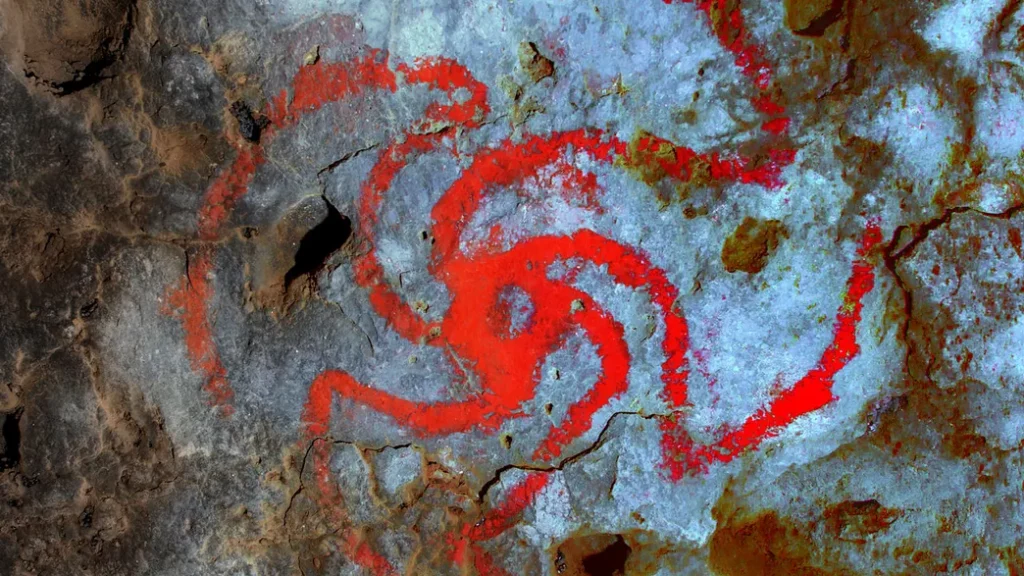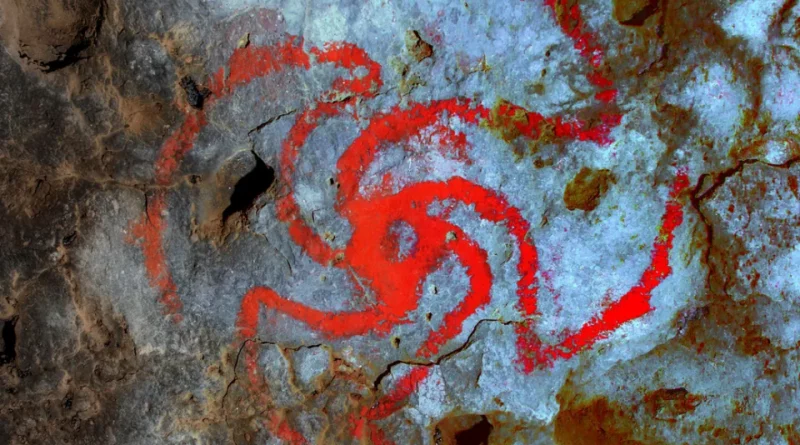First Evidence of Psychedelic Drugs at Rock Art Site
[Please note that this page contains affiliate links. If you choose to purchase after clicking a link, I may receive a commission at no extra cost to you.]
A swirly red flower indecipherable on a cave wall over 400 years ago is the first evidence that Native Americans consumed psychedelic drugs at rock art sites.
Found in California’s Pinwheel Cave, the rock cave art is said to depict a Datura wrightii, a flowering plant area of the nightshade family and known to have both psychedelic and poisonous properties.
The evidence of psychedelic indulgences at the cave goes much further than just a flower drawing. Archaeologists have now done a chemical analysis to prove that chewed residue of the psychedelic flower can be found in the crevices of the cave.
Published in the journal Proceedings of the National Academy of Sciences, the research team argues these functions as “the first evidence for the ingestion of psychedelics at a rock art site.” Contrary to theories previously, however, they think that the artist wasn’t a shaman under the influence of the psychedelic plant.
It is well established that some Native Americans and other cultures use Datura in spiritual ceremonies. However, this is the first for researchers to have discovered physical traces of the psychedelic in a cave alongside rock art.

Archaeologists, forensic experts, and chemists used liquid chromatography to draw this conclusion. Then, mass spectrometry to find the presence of psychedelic alkaloids atropine and scopolamine in the chewed-up lumps of plant material discovered in the cave walls. Looking at the electron microscope analysis was then used to show the alkaloids are from a Datura wrightii.
It is also no coincidence that the artwork shows a flower-like shape with five elegant petals, similar to the flower of many Datura species.
They discovered some important implications for what they know about the formation of rock art and altered states of consciousness. A dominant theory has posited that shamans produced many instances of rock art in psychedelic states while high on hallucinogenics.
This is due to rock art’s trippy patterns and imagery. Although, researchers have never seen any evidence of the consumption of psychedelic substances at any cave art site in the world.
The study has discovered this evidence of psychedelics at rock art sites. However, the scientists argue that their findings challenge the “high shaman” model since they think the artist was not stoned when forming this illustration, was it meant to show this individual’s psychedelic experience.
Instead, the cave art is more likely meant to act like a sign showing people that this was a space where this plant was taken. Like a church’s stained-glass window, the artwork shows a culturally important image that applies to the space and isn’t meant to show the vivid drug-induced images in the psychedelic mind.


